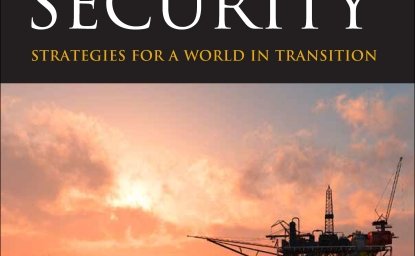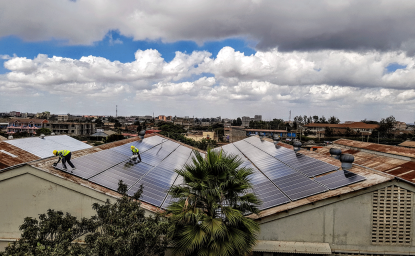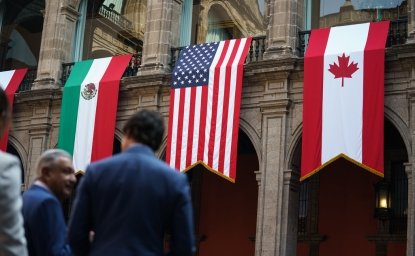Chapter 10 Update: Iraq, Iran and the Gulf Region
In the two years since Energy and Security: Strategies for a World in Transition was published, the key dynamics shaping the Middle East that we outlined in our original chapter have become more pronounced. The response to a global oversupply of crude (including growing unconventional oil output in the United States) and competition for political power between hegemons (Saudi Arabia, Iran and Turkey), remain the key determinants of oil and gas policy for local producers. Indeed, the combination of these two factors has ushered a new era for oil markets that is having a major impact on the oil industry worldwide, the United States included. Traditional concepts of energy security prevail, especially given persistent tension between local powers and the deleterious impact of regional unrest on the oil production aspirations of key regional states. But the interplay between US unconventionals and regional competition has altered the energy-policy priorities of key Middle East producing states, especially Saudi Arabia, leading to a potentially different set of energy security challenges for the United States than has been the case in the past.
This shift in policy has been evident since the November 2014 OPEC meeting, when the organization – led by Saudi Arabia – formally switched from a price-support to a market-share strategy in response to inexorably rising output in the United States and other non-OPEC states. The logic of the new policy was relatively simple: to undermine this non-OPEC production growth by allowing global prices to fall to levels that would make much of this output uneconomic. Put another way, Saudi Arabia and other OPEC states were unwilling to cut their own production simply to maintain high prices that higher-cost producers outside the organization were benefiting from to grow their own output. However, this strategy has been more costly than key OPEC states appear to have anticipated initially. The US unconventional sector in particular has proven more resilient than previously believed by many OPEC member states. As a result, supply surpluses have persisted despite ever-lower prices. Meanwhile, as prices have fallen to levels not seen in over a decade, many OPEC states have faced fiscal crises due to lower export returns.
In the past, these financial pressures might have forced collective action by OPEC to cut output and raise prices. But the organization is showing no appetite for a shift to price defense, largely because Saudi Arabia refuses to do so. Riyadh remains determined to protect the Kingdom’s market share, a policy that has become more pronounced since King Salman bin Abd al-Aziz ascended to the throne. But perhaps more important are rising Saudi fears over Iranian influence in the Middle East, especially in the aftermath of the July 2015 Joint Comprehensive Plan of Action (JCPOA) between Tehran and the P5+1 (the five permanent members of the UN Security Council plus Germany). While Riyadh cautiously welcomed the deal when it was signed, the Kingdom’s new leaders fear that the easing of international sanctions on Iran, and renewed investment in its economy, will bolster Tehran’s ability to interfere regionally to the detriment of Saudi interests.
The Saudi response to the deal illustrates the intensity of regional competition between rival local powers, and the depth of mistrust between them. Tension between Saudi Arabia and Iran is also tinged heavily with a sectarian hue, as Sunni-Shia rivalries intensify across the region. The result is a volatile brew, which is fueling civil wars in Syria, Iraq and Yemen, and leaving little appetite for political or economic compromise. Participants are guided by a zero-sum view of developments, apparently seeing virtue in fueling violence and financial pressure rather than in a collective deal to suppress local crises.
In this context, Riyadh fears that a recovery of Iranian exports and the unfreezing of Iranian financial assets abroad now that sanctions have been lifted will bolster Tehran’s financial and military support for Iran’s regional allies, to the detriment of Saudi interests and influence. At lower oil prices, however, the financial windfall accruing to Iran will be significantly less, meaning more financial pressure at home and less opportunity for transfers to allies abroad. Moreover, given Saudi Arabia’s much stronger foreign-reserves position, Riyadh knows that it can withstand the financial pressure of low oil prices for much longer than Iran. Saudi Arabia cannot run the huge fiscal and current account deficits that it did in 2015 forever; indeed, financial pressures have already forced the Saudi government to introduce some gradual reforms, and could lead to even bigger ones in the future, with the Kingdom’s leaders even musing over a partial privatization of Saudi Aramco. But with a reported $635 billion of reserves in early 2016, it is in a much more robust position to withstand extended lower oil prices than it was in 1997-98, and certainly more so than Iran is at present.
Consequently, there is little immediate domestic pressure on Riyadh to alter its market-share oil-production strategy any time soon. Instead, it is likely to maintain pressure on Iran, at least until there is greater clarity over the real impact of sanctions removal now that the embargo has been lifted, and how this change will impact Tehran’s own oil and regional policies. On the oil front, for example, uncertainty clouds just how much production Iran can restore and how quickly it will seek to recapture its own lost market share. Estimates of Iranian export growth range by around 300-700 thousand barrels per day (mb/d) by the end of 2016 and into the early part of 2017, but this forecast is lower than initial estimates when the JCPOA was originally signed. At the same time, there is little sense of how quickly Iran can attract investment and boost longer-term output in the sector. Iran will want to reclaim forsaken markets, with a focus on Europe where it lost 600,000 b/d in exports, and Iranian government leaders know that reversing Iran’s economic decline will be impossible without boosting oil sales and attracting foreign investment into the energy sector. But decision-makers are also cognizant that a too-rapid production increase will put further downward pressure on prices given the current oversupply in oil markets, limiting the financial benefits that Iranian President Hassan Rouhani is seeking to gain from implementation of the JCPOA. These challenges will pose difficult dilemmas for the Iranian government, especially at a time of intense political competition between rival factions, reflected in part in deep disputes over the political value of implementing the JCPOA.
Low oil prices and regional tensions are impacting production patterns elsewhere, notably in Iraq. The country’s output rose significantly in 2015, from 3.5 million barrels per day (MMb/d) to 4.3 MMb/d, but the gross numbers hide a more complicated story. Part of the production increase was due to the opening of a trans-Kurdistan pipeline, that freed stranded capacity in the north of the country that had been shut in in the spring of 2014 as a result of attacks on the main Kirkuk to Ceyhan pipeline by Sunni extremists. Moreover, a short-lived December 2014 export-for-revenue deal between Baghdad and Irbil allowed the Kurdistan Regional Government (KRG) to export its local production formally through the trans-Kurdistan line, rather than smuggling across the border to Turkey by truck. As a result, roughly 400-450 mb/d of the incremental volume increases registered by Iraq were not strictly speaking new volumes. There was some rise in Kurdish production, and in the south the expansion of pipeline and storage infrastructure raised export capacity by around 200 mb/d, which allowed increased wellhead output.
Nevertheless, both Baghdad and Irbil have been crippled financially by the low oil prices, and the prospects of any further output rise in the short-to-medium term look dim. The federal government has been forced to squeeze capital spending in its 2016 budget (while nonetheless forecasting more than $20 billion that it will struggle to finance), and investment in the oil sector will be hit as a result, not least because foreign investors are concerned about recovering cost-recovery and remuneration receivables at a time when their own budgets have been trimmed. In the longer-term, the ripple effect of current efforts to finance the budget are likely to linger for a number of years, undermining investor confidence in the sector and Iraq’s ability to expand it significantly.
The fiscal situation in Kurdistan is more dire still, as the regional government lacks access to foreign reserves or international lending, while domestic sources of capital are drying up. Irbil has managed to pay foreign investors in the Kurdish sector for the past few months, but significant arrears remain, and with its revenue from independent exports insufficient to cover regional government spending, the KRG will struggle to fund significant increases in production.
This situation could become more difficult still if, as indications suggest, the KRG seeks formal independence any time soon. Kurdish officials, especially from the ruling KDP, see an historic opportunity to achieve this cherished national goal; KDP leaders have recently revived calls for a referendum in Kurdistan on independence, hinting that a plebiscite could be held in a matter of months. Meanwhile, fallout from domestic Turkish politics, the civil war in Syria and wider regional competition has altered Ankara’s views on KRG secession significantly; an independent Iraqi Kurdistan under KDP tutelage may now be seen as serving Turkish interests rather than threatening them. Some Gulf states also appear to see virtue in Kurdish independence as a way of weakening Iran’s influence in Iraq (and the power of the Shia-controlled federal government in Baghdad).
But independence would come at a financial cost for Irbil. While the collapse of the 2014 export-for-revenue deal with Baghdad has robbed it of its 17% of the federal Iraqi budget, the KRG continues to benefit from federal military-spending and welfare disbursements. Being part of the Iraqi state also provides legal cover for the KRG’s use of the pipeline through Turkey to Ceyhan and storage at the port, which is formally part of a sovereign arrangement between Baghdad and Ankara. Thus, in the short term, secession could increase fiscal pressure on the KRG, complicating efforts to attract more investment into its oil sector and to increase its output. Any dispute with Baghdad over the fields formerly operated by the state-owned North Oil Company (NOC) could also threaten to rob Irbil of production; at the very least, Kurdish secession is likely to prompt the federal government to stop paying NOC employees, adding further to Irbil’s public-sector burden.
For both Baghdad and Irbil, the future of oil prices will be critical to political stability. Neither can withstand prolonged periods of low oil prices without undermining already fragile state institutions and government authority. In southern Iraq, the danger remains that, as disbursements from the center decline, pressure to establish autonomous control over the local oil and gas sector will rise, creating additional internal tensions. Thus, state fragmentation is a growing risk.
However, as is the case with the Iran and much of the rest of OPEC, Iraq (and the KRG) are at the whim of Saudi oil policy. And this in turn will continue to be shaped by regional politics and the tensions they are producing. Riyadh is showing few signs of budging on market share, and may be hoping that the impact of this policy outside of OPEC will eventually undermine production growth and create new space for OPEC exports without any need to alter course by reducing output. But as 2015 illustrated, this is a risky approach, and prey to a host of external factors outside of Riyadh’s control, not least demand growth in key states such as China and the evolution of the unconventional sector in the United States. Ultimately, Saudi strategy is likely to undermine production growth internationally over the medium term; but the risks to stability in key OPEC states in the Middle East and elsewhere during that period may produce new problems of their own.
J. Robinson West is senior advisor at the Center for Strategic and International Studies and founder and former chairman of PFC Energy. He has served as US Assistant Secretary of the Interior, in charge of offshore oil policy, as Deputy Assistant Secretary of Defense for International Economic Affairs, and as a member of the White House staff.
Raad Alkadiri is Managing Director for Petroleum Sector Risk at IHS Energy and was previously a partner and head of the markets and country risk practice at PFC Energy. He has served as Iraq policy adviser to the UK Foreign and Commonwealth Office and has worked as Middle East analyst and deputy managing editor of Oxford Analytica.



